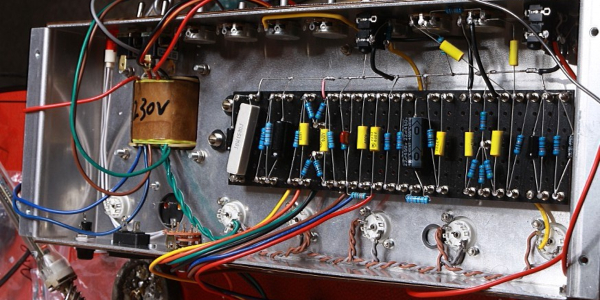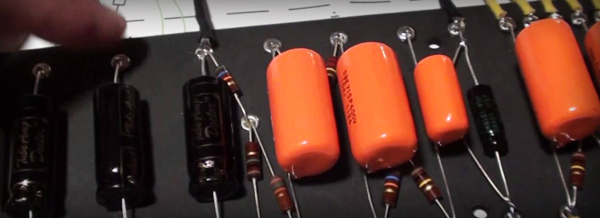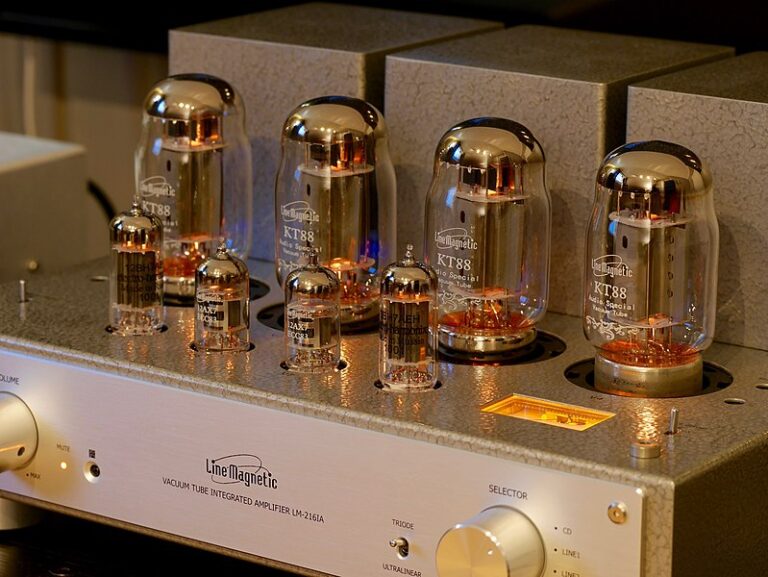Point to Point amps – some myths and why some “poor” techs love them
Point to Point (PTP) and Printed Circuit Board (PCB) amps – an ongoing debate that rages on. Why do many of the most “non-technical” techs prefer these? I know … a lot of flak coming my way for my thinking on this, but it is my personal thinking, whether you agree or not.
- PTP is used, generally, on the most simple amp circuits. For tech to find a problem, it is a much more simple matter of lifting one side of a component and metering it, than dealing with a circuit board mounted board.
- The simple circuit design makes it easier to “shotgun” and find the bad component.
- Many PCB amps bring in a lot of business. It is easy to justify high charges …. “man, this is a pretty darn old amp, it’s bound to need a lot of work”. Many of these amps make all sorts of “weird noises” too, as their components have no support other than the ends of the component leads. Think of them as big guitar strings with a weight in the middle.
Properly designed PTP amps are wonderful. Many are based on classic designs with simple tone circuits. On the best of them, they are costly, due to the attention to design and very high component costs. As an example, a 15-cent metal film resistor will be less costly than a 65-cent carbon comp resistor. When these amps are built and wired properly, with high-grade parts, the result is magic.
Many amps are called PTP, but not true PTP amps. Fender amps such as most of the tweed era, are really more of a basic form of circuit board amp, a piece of tagboard type of material is used to support the components. This was one factor that made the amps much more sturdy and roadworthy than some of the other amps of the day. This construction was also used in the later tolex amps.
There are amps that use other methods of “PTP” such as Hi-Watt, Ashdown, and Roccaforte. These amps use turret boards or standoffs. Here, the components are physically supported with shorter leads, and one component does not drag another and another to its next attachment point.
These amps are some of the highest caliber and strength in construction. This was the sort of construction used in military gear in the past.

PTP wired amps, true PTP, are very inconsistent. With a modern PCB amp, there are circuit simulators, that do the board layout with the trace runs optimized for the least noise and best performance. In a true PTP, two amps can sound very different. Also keep in mind, that in the past, true PTP amps were built with some of the least expensive labor they could find, which often reflected in the end product. Checking these old PTP amps though, was easier, as they were of very simple design.
There are some great PTP amps, such as Steve Carr’s amps, but you won’t find these cheaply. High-grade components and components anchored and wire strain relieved is all part of the cost of these amps. On the “hybrid” PTP amps, such as the Fender Tweed style newly made amps, you have folks like Victoria. Again, attention to the highest grades of construction and parts help here. On the turret board front, you have folks like Roccaforte. None of these amps are cheap, and each of them is worth every penny of their retail cost.
PCB amps …. why some techs don’t like them. Again, complex design is more often due to multi-channels, switching effects loops, and other features. It is hard for the “technically challenged” to find a problem.
They are less expensive at the lower or entry end of the amp scale and offer a lot of features for the dollar but at times users lower-cost components and faster construction methods. There are hybrid folks, that use the best of PCB and PTP such as Andy Marshall (THD) as just one example. Chassis-mounted tube sockets wired to a PCB substrate that is many times thicker than most F-16 PCBs, and traces on the PCB that are so thick, that a moto tool is needed if you ever want to cut one of them.
A well-built amp, well designed, and using great components, is a great amp, whether PTP, Hybrid, or PCB.
My most “supported” amps, those in the shop the most often, are the true PTP amps that are out on tour on the road, that were done by “boutique” designers that jumped on the vintage bandwagon. They have parts that are true PTP, not tagboard (as the Fender Tweed and Tolex era amps), and not turret board, but true PTP. These amps have those bigger caps, just hanging out in space, swaying around as the equipment truck or bus bounces hundreds of miles down the road, from city to the next city. These amps end up with cracked solder joints at best in many many cases, and most of them play their own symphony physically, depending on the note coming out of the speaker, as the components resonate.
So, before you consider an amp with PTP vs. PCB vs. Hybrid, do a little more thinking. If it is a multi-channel amp with switching ability, the last thing I’d personally ever buy would be a NON-PCB amp in this arena.

If your tech thinks that replacing a component on a PCB board is hard, then frankly, find a new tech. Components have been replaced for decades on the computer and military PCBs where folk’s lives rely on the unit …. not just a simple guitar amp. BUT, there is a bit of proper soldering knowledge attention, and the proper tools, which are pretty darn easy to come by. If your tech complains about burnt etches and problems in PCBs, this may be from first-hand experience, and you may want to consider a different tech in the future. If they can’t do this right, they are probably making other mistakes much bigger in other areas.
Just as a close, some of what I think are the finest examples of various types of amp construction today in some examples:
- Pure PTP – Steve Carr Amplifiers.
- Turret Board Mil Spec – Roccaforte.
- PTP/PCB – Groove Tubes Soul-O series amps, and THD Electronics – The best of both worlds.
- PCB channel switching high grade – Rivera Amplifiers
- PTP Tagboard (Fender tweed/tolex era) – Victoria Amplifier
- PCB general – Fender amplifier in the reissue series amps.
I know there are many others, but to me, these are the best of the best. In the case of each of the above, there are some points where they excel in all areas. Rivera amps (look at the cabinet costruction … no self-tapping wood screws as an example, but machine screws). Victoria amps (look at the components, the wiring, and overall detail). THD (look at the boards, the traces, and overall detail). Carr (components, properly supported runs and parts, and overall detail). Roccaforte (overall detail, parts, and the amps are literally bomb proof). Fender new amps (very nice PCB work in the target price range. Give me a “reissue” twin, super, or deluxe, and a few hours, and then you tell me which is the original after playing).
I know this will “piss off” a lot of folks, especially some amp techs, and folks that may have spent way too much for amps that jumped on the vintage bandwagon perhaps. There are many great amps that I did not mention, as this was long enough already, and the amps above I mentioned, have had no downtime due to failures over the time I have worked on them for general upkeep.
I am now ready for folks to pick one or two details of the above, and write scathing retorts, rather than seeing the overall picture here.







